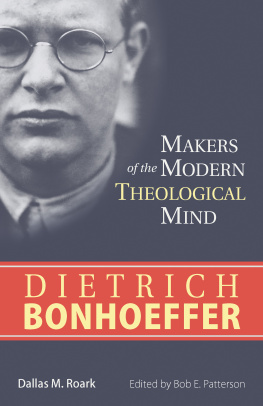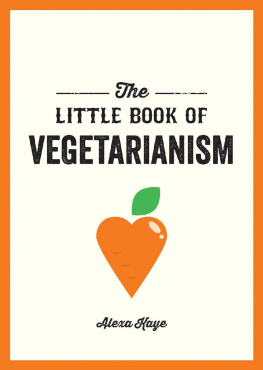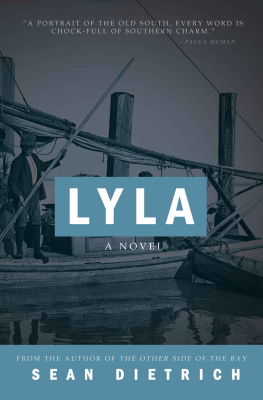Thank you for buying this ebook, published by NYU Press.
Sign up for our e-newsletters to receive information about forthcoming books, special discounts, and more!
Sign Up!
About NYU Press
A publisher of original scholarship since its founding in 1916, New York University Press Produces more than 100 new books each year, with a backlist of 3,000 titles in print. Working across the humanities and social sciences, NYU Press has award-winning lists in sociology, law, cultural and American studies, religion, American history, anthropology, politics, criminology, media and communication, literary studies, and psychology.
THE DRUG COMPANY NEXT DOOR
NEW YORK UNIVERSITY PRESS
New York and London
www.nyupress.org
2013 by New York University
All rights reserved
References to Internet websites (URLs) were accurate at the time of writing. Neither the author nor New York University Press is responsible for URLs that may have expired or changed since the manuscript was prepared.
LIBRARY OF CONGRESS CATALOGING-IN-PUBLICATION DATA
Dietrich, Alexa S.
The drug company next door : pollution, jobs, and community health in Puerto Rico / Alexa S. Dietrich.
pages cm
Includes bibliographical references and index.
ISBN 978-0-8147-2499-6 (cl: alk. paper)
ISBN 978-0-8147-2473-6 (pb: alk. paper)
1. Pharmaceutical industryEnvironmental aspectsPuerto Rico. 2. Pharmaceutical industryRisk assessmentPuerto Rico. 3. PollutionSocial aspectsPuerto Rico. 4. PollutionEconomic aspectsPuerto Rico. 5. Environmental policyCitizen participationPuerto Rico. I. Title.
TD428.P54D54 2013
363.731dc23
2012050536
New York University Press books are printed on acid-free paper, and their binding materials are chosen for strength and durability. We strive to use environmentally responsible suppliers and materials to the greatest extent possible in publishing our books.
Manufactured in the United States of America
10 9 8 7 6 5 4 3 2 1
ACKNOWLEDGMENTS
This research would not have been possible without access, at a minimum, and trust, in many cases from people at all levels of the project. Virtually every person I met contributed to my thinking in some way, because virtually everyone had ideas about the role of the pharmaceutical industry in Puerto Rican life. Many of those people will go unnamed in these acknowledgments, sometimes out of respect for the confidentiality I promised them, but that does not diminish the level of gratitude I feel for their help and support. The research could not have been accomplished without them, though the conclusions I make in the book (as well as any errors) are my own.
Before living in Puerto Rico, I gained insight from industry insiders in my hometown, and benefited from being able to compare the experiences of people there with those in Nocor. On my arrival I quite literally depended on the kindness of strangers for a safe landing in the field. My most heartfelt thanks to Deepak Lamba-Nieves, who let me sleep on his couch until I found a place to live, and who sang Dont Stop Believin in a karaoke bar one night when I needed to hear it. Deepak was, and continues to be, a source of humor and insight about Puerto Rico and life in general. Thanks also to Beliza Torres-Narvaez, who broadened my cultural horizons, and was a great sounding board. Erlyn Ramirez gave me my first mallorca and then adopted me practically as her own daughter. She and las lobas de San Jorge (especially Hilvita Conde, Sonia Aponte, and Silvia Henrquez) fed and sheltered my body and soul in more ways than I can count. Sonia Aponte gave me early feedback on ideas about environmentalism, and Silvia Henrquez gave me the opportunity to experience NGO work in La Perla firsthand.
My work in the town I call Nocor benefited from the generosity and friendship of many people, activists and non-activists. On the activist side I would especially like to thank Don Pedro and Don Luis, who always welcomed me into their homes, worked tirelessly to give me information, but were adamant that I should draw my own conclusions. Doa Monin said little about the work, but always gave me food and affection, and arranged a wonderful interview with the recordkeepers of the stench. Other members of the local environmental group were also welcoming and supportive, and researchers from the University of Puerto RicoArecibo were very open to including me in their projects, such as measuring water quality. I learned a great deal about the potential for multidisciplinary environmental fieldwork from them, as well as the pitfalls of action research. Public Health educators from the University of Puerto RicoCiencias Mdicas campus were also supportive and provided insight along the way.
A number of employees from various government agencies and companies took time to speak with me, or to invite me to events that proved helpful in my research. Thanks especially to members of the Department of Health in both San Juan and Arecibo, the local EPA offices, Environmental Quality Board, the Planning Board, the Aqueduct and Sewer Authority, and the Special Communities agency. Members of the Palenque neighborhood were also welcoming, and helped me understand the variety of ways a community could be organized. Members of the Catholic community organization in Arecibo did likewise. Employees at the local library allowed me to distribute my survey and helped me locate various documents. Employees of the Centro Cultural gave energetically of their time and knowledge, particularly lending to my sense of historical continuity and current cultural values. Finally, however critical I may be of their actions, I received a great deal of cooperation from both the alcaldes office and the municipal legislature. If anything, I believe their openness demonstrates that the majority of those working in those settings do feel they are working for the public good, and will be open to critical recommendations. As the conclusion of the epilogue demonstrates, I also believe that Nocor shows a great capacity for renewal.
I feel justified in the hope I feel for Nocor in great part because it is a community that, in my own experience, is full of good neighbors. My own neighbors, in particular Mari, Carlos, and Paola, made every day a good day, in the millions of tiny ways that living in the company of good people can. Finally, Brunilda Morales and her family were as helpful and supportive of me as if I were their own. The gratitude I owe them is more profound than I can say.
While I was in the field, and when I returned, many friends and family members in Atlanta and New York helped me keep my sanity with words of love and support. In particular, Mary and Dennis Lerner, and Ed, Zach, Liz, and Matt Dietrich, always believed that I would get it done, even when they werent exactly sure what I was doing. Erin Finley and Jess Levin both sent encouragement and music that kept me going. Peter Brown and Peggy Barlett visited me in the field, and in doing so helped affirm the value and relevance of the project.














